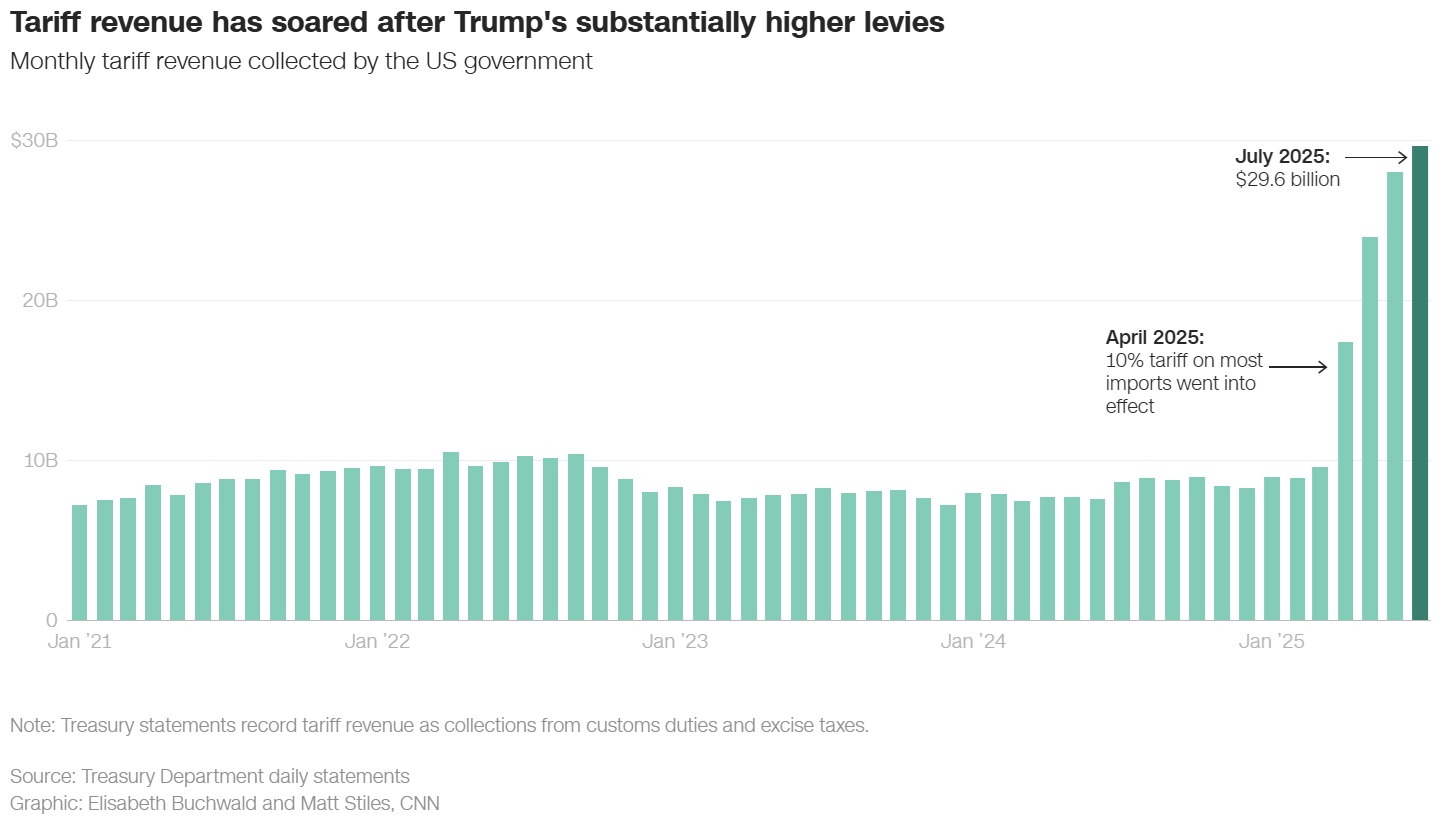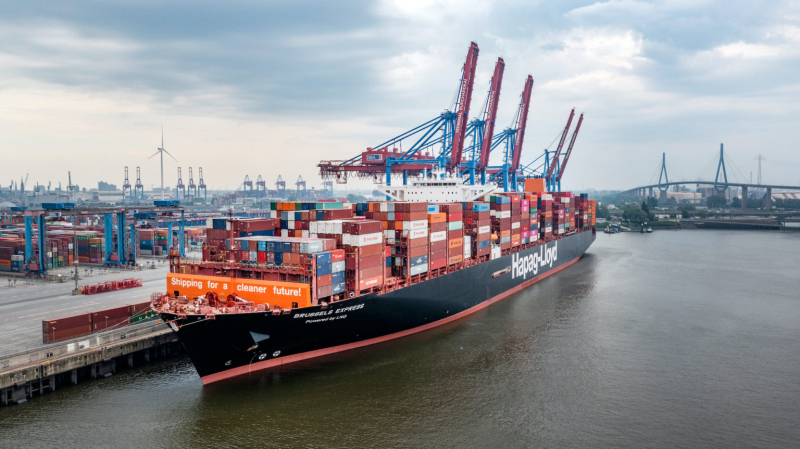Hardly a day goes by without President Donald Trump boasting about the record tariff revenue the US government has been collecting since he ratcheted up taxes on almost every imported good.
“We have a lot of money coming in, much more money than the country’s ever seen,” Trump said over the weekend, referring to tariff revenue.
Trump’s right: The US government collected nearly $30 billion in tariff revenue last month, according to the Treasury Department. That’s a 242% jump in tariff revenue compared to last July.
Since April, when the president began imposing a 10% tariff across nearly all goods, among several other steeper levies that followed, the government collected a total of $100 billion in tariff revenue, three times the amount collected during the same four months last year.

So what exactly is the government doing with all this money?
Trump has floated a combination of two options: paying down the government’s multi-trillion debt and sending “tariff rebate checks” to Americans.
“The purpose of what I’m doing is primarily to pay down debt, which will happen in very large quantity,” Trump said Tuesday. “But I think there’s also a possibility that we’re taking in so much money that we may very well make a dividend to the people of America.”
Neither has occurred – at least not yet. So it might appear to many Americans that the billions upon billions of dollars flowing in from tariffs, coming primarily out of the pockets of US businesses footing the initial bills to import foreign goods, are collecting dust.
But there’s much more going on behind the scenes.
What happens to tariff revenue
Any revenue the government collects, through ordinary taxes or tariffs, goes into a general fund managed by the Treasury Department. The Treasury refers to that fund as “America’s checkbook,” because it’s used to pay the government’s bills, such as distributing tax refunds.
When the amount of revenue the government takes in falls short of its bills, meaning it runs a budget deficit, it borrows money to make up the difference. In total, the government is on the hook to repay more than $36 trillion, an amount that has been steadily growing, raising alarm bells among many economists claiming it’s weighing on economic growth.
That’s because, like any American borrowing money, the government has to pay interest on its loans. The more the government borrows, the more interest it has to repay, which is yet another expense the government has to pay that doesn’t go toward public-good investments, such as improving highway roads.
While the tariff revenue being collected isn’t sufficient to wipe away the $1.3 trillion budget deficit the government’s running for the current fiscal year, tariff collections have caused that figure to shrink. That means the government doesn’t have to resort to borrowing as much money as it otherwise would without the tariff revenue.
“It’s not like there’s a better use for the money,” Brett Ryan, senior US economist at Deutsche Bank, told CNN, referring to tariff revenue.
What about ‘tariff rebate checks’?
If Congress gets behind Trump’s idea to redistribute tariff revenue to Americans in the form of “rebate checks,” which Republican Sen. Josh Hawley introduced a bill for last week, it would cause the deficit to widen, said Ernie Tedeschi, director of economics at the Budget Lab at Yale and a former economist in the Biden White House.
“They’re the wrong policy to pursue right now,” he added, saying that it could cause inflation to spike.
White House officials did not respond to CNN’s inquiry.
Tariffs could still come back to bite Americans
Even though tariff revenue may help the government’s financial situation on paper, it’s not necessarily coming pain-free.
Businesses have, for the most part, been absorbing the higher costs without raising prices. But that’s not the case for every business. Appliances, toys, consumer electronics tariffs and other goods that are sensitive to tariff changes are getting more expensive, recent inflation reports published by the government show. And many companies, including Walmart and Procter & Gamble, are warning of forthcoming price hikes.
The uncertainty tied to tariffs has also caused businesses to put off hiring more workers, leading to fewer job openings, several economic surveys indicate.
“Tariffs are going to have a negative economic effect on the American economy,” Tedeschi told CNN. The Yale Budget Lab estimates that Trump’s tariffs will shave half a point off US gross domestic product this year and next.
“That’s going to partly but not fully offset the amount of revenues that we raise from tariffs. Because if your economy is growing less than you thought, then, yeah, you raise this tariff revenue, but maybe you raise a little bit less in income taxes and payroll taxes as a result.”
Trump and his administration see it differently, however, arguing that the recently enacted mega tax cuts and spending bill, combined with the tariff revenue, will supercharge the US economy over time.






























